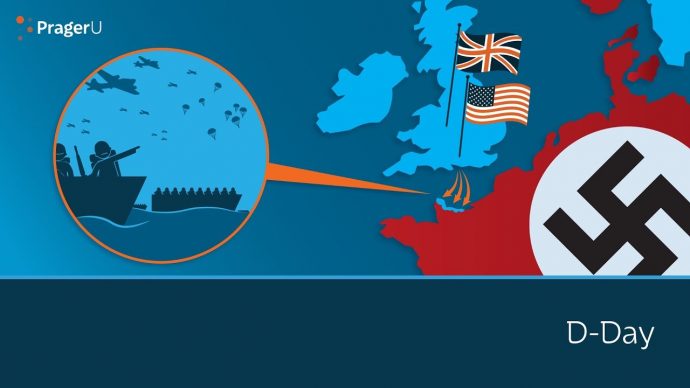Peter Caddick at Prager University explains D-Day:
On June 6, 1944, Allied forces stormed the beaches of Normandy in northern France. Their goal: to liberate Western Europe from Nazi tyranny. From a distance, it might seem that victory was pre-ordained, but no one felt that way at the time. British military historian Peter Caddick-Adams tells the incredible story of what happened on that monumental day.
From the transcript:
There were 36,525 days in the twentieth century. Of these, none was more consequential than June 6th, 1944. D-Day: the Allied invasion of Normandy in Nazi-occupied France. It did not end World War II, but without it, the Nazi war machine would not and could not have been defeated.
We, of course, know the good guys – America, England and its allies – won. But in 1944, there was no certainty of success. In fact, there was just as much doubt as confidence. Winston Churchill’s senior advisor, Field Marshal Brooke, wrote in his diary, “I am very uneasy about the whole operation. It may well be the most ghastly disaster of the whole war.”
Brooke’s fears were entirely reasonable.
First there were tens of thousands of men and millions of tons of material and supplies that had to be moved one hundred miles across one of the roughest bodies of water in the world – the English Channel. And it had to be kept secret. If the Germans knew where and when the allies were landing, they could mass forces against them and turn the beaches of northern France into killing fields.
To prevent this, the Allies took every possible precaution. Their air forces destroyed bridges, roads and railways that might be used by the Germans to rush troops to the invasion site. Everyone knew the attack was coming; the key was to keep the Germans guessing.
Read more: Prager U

